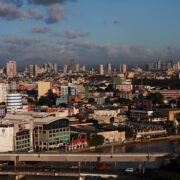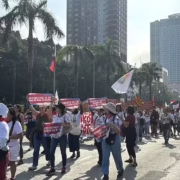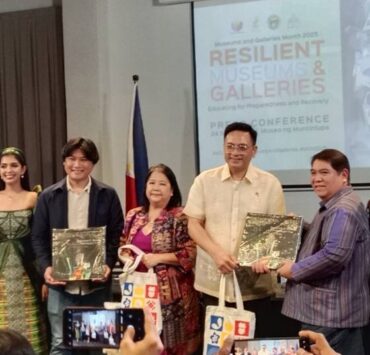Mangyan culture bearers feted for preserving old crafts, songs
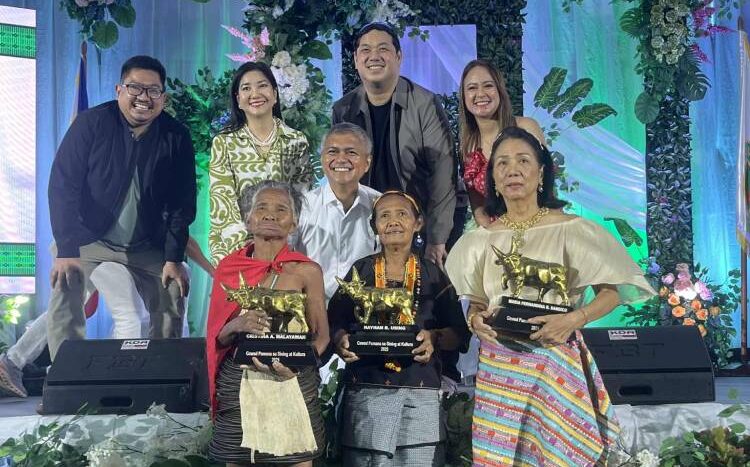
At Sitio Galang in Mansalay’s Panaytayan village, sexagenarian Nayhan Using engages in a regular activity: weaving the traditional Hanunuo Mangyan textile ramit, a skill she learned from her mother when she was 15 years old.
The craft of weaving is actually more of a passion for her, to ensure that such intangible cultural heritage (ICH) is sustained and transferred to the young generation of the Hanunuo, one of eight distinct ethnolinguistic groups in the island of Mindoro that are collectively called Mangyan.
Apart from textile weaving, she also does beadwork, creating pieces such as necklaces, earrings, and bracelets adorned with the traditional cross-form design “pakudos.”
She said she learned everything by observation, with her mother helping and teaching her master the craft’s refinements and technicalities.
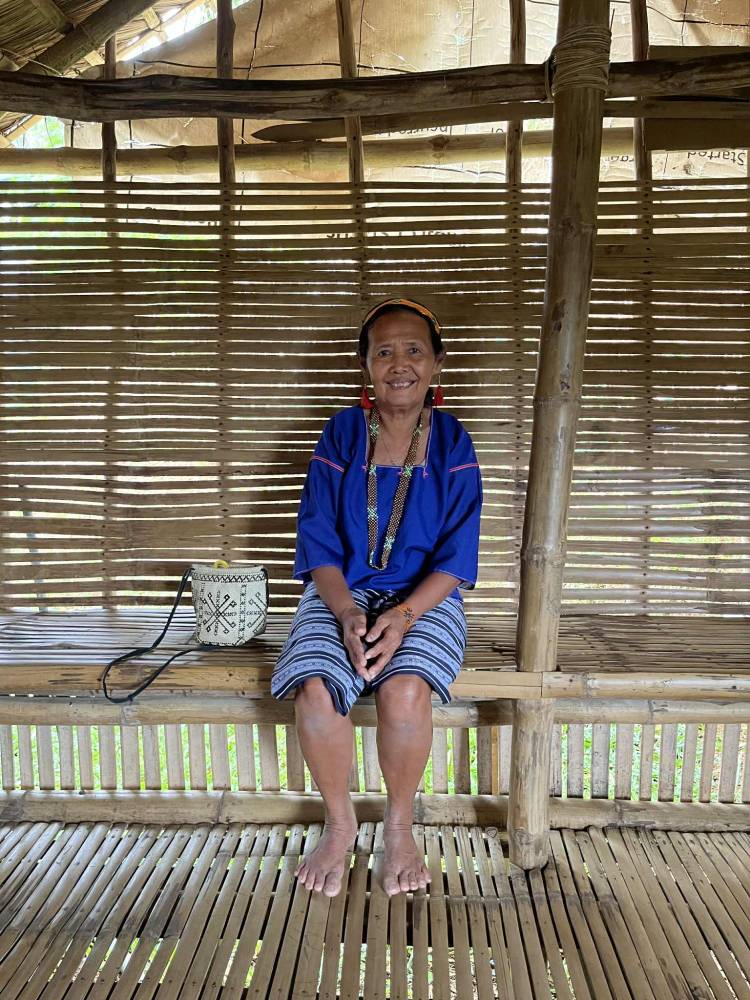
Using, the oldest weaver in her community, teaches young members of the Hanunuo in Mansalay, mostly girls on how to do weaving using the backstrap loom, and making bracelets and necklaces using beads purchased outside of their domain.
Traditionally, the beads used came from trading with foreign visitors such as the Chinese and those harvested from the seeds of a banana species called “tigbi.”
The tigbi seeds, said Using, were used to make a bracelet called “tibak” that needed to be worn always for it to acquire a shiny appearance.
Hanunuo identity
The craft of weaving is generally called “paghabul,” while textile weaving and beadwork are called “pagbuwat ramit” and “pagbuwat uno,” respectively.
In terms of textile weaving, which could take two weeks to finish a piece, Using is an expert in the “sinupnap” or x-shaped design—the hardest to execute, she said.
Apart from this, she also creates textiles with two designs: the “binanalyo” (composed of lines) and the “minatahan” (composed of dots).
The textiles are more varied now in terms of color, but traditionally, the colors were just white and black, with “tagum” (indigo) as dye.
In a recent interview at the Oriental Mindoro Heritage and Cultural Center in Mansalay, Using said their traditional crafts should be taught to the younger members of their community because it is part of their identity and culture.
“We inherited these from our ancestors,” she said in Hanunuo. “Buhay namin ito (this is our life).”
Their textiles and beads also need to be brought outside the province and become known elsewhere, she said, “so others [can] experience using these, not only the Mangyan.”
For her invaluable contribution to the safeguarding, preservation, and promotion of her community’s intangible cultural heritage assets, the provincial government of Oriental Mindoro led by Gov. Humerlito “Bonz” Dolor bestowed on Using on Sept. 19 the Gawad Pamana sa Sining at Kultura, the highest award given by the province to its arts and culture practitioners.
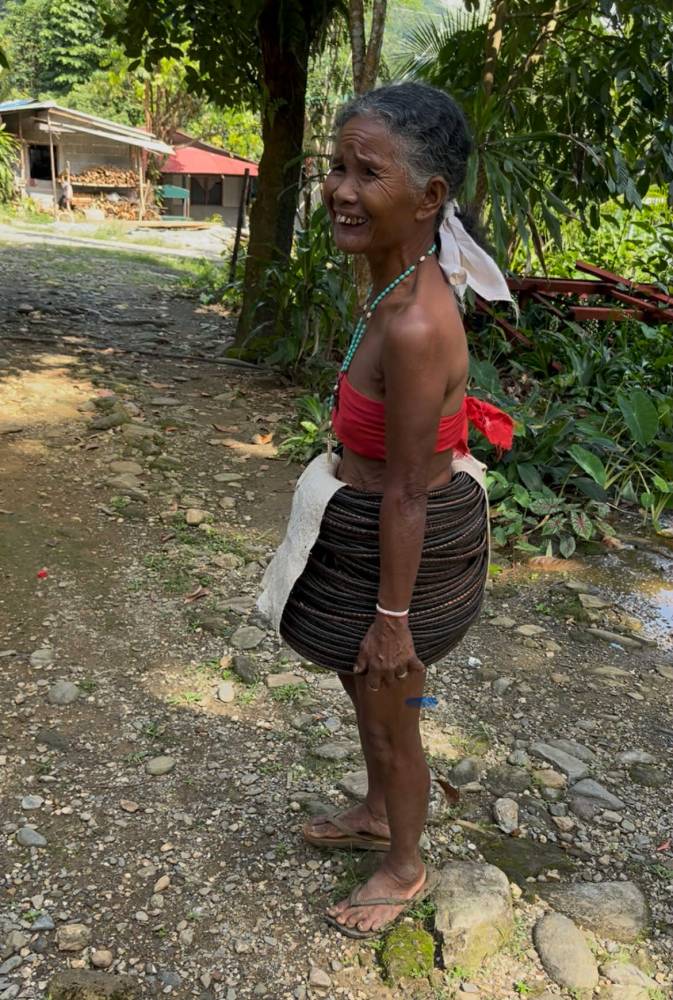
Alangan chanter
Aside from Using, another culture bearer, 70-year-old Cristina Malayawan from Paitan village, Naujan, was also given the award, the first time it was conferred on a chanter.
Just like Using, Malayawan is a culture bearer from the Alangan Mangyan who, for decades, perfected the art of ‘banggi,” “panggiseden,” and “baren.”
Banggi could be a song sung during feasts—like the “agpamago” which is done for a bountiful harvest as well as during kaingin, farming, and fishing—or a poetic joust between courtship, while panggiseden pertains to rhythmic conversations and baren is the community’s form of lullaby.
Educator Emmanuel Guarde, the first recorded Mangyan to obtain a doctorate degree, said that the banggi, panggiseden, and baren “have no definite lyrics since their contents depend on the occasion, feelings, and experiences of the singer.”
Malayawan, he said, serves as a bridge of knowledge and a bearer of culture through various activities she is involved in, such as teaching these ICH assets to the young generations of her ethnic group, being a partner of the Department of Education in the crafting of a curriculum for the Alangan Mangyan, and as a resource person for the Indigenous Peoples Education program and the exclusive school for the Alangan called Tugdaan.
“Her joy in sharing her knowledge is a testament to her belief that culture must be lived, taught, and transferred to the generations to come,” Guarde said.
During the awarding held at the Jolly Waves Waterpark and Resort in Calapan, Malayawan did not prepare an acceptance speech but extemporaneously performed a heartwarming banggi, thanking everyone for the recognition.
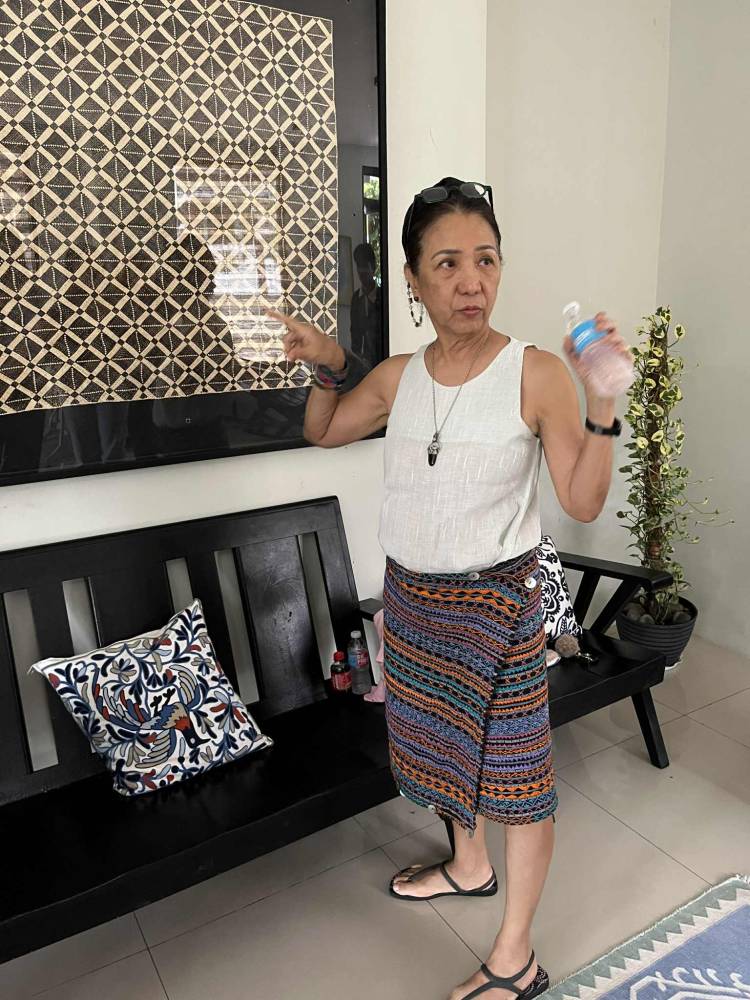
‘Queen of wraps’
Completing the triumvirate of awardees this year is famed fashion designer-visual artist Ditta Sandico of Bulalacao town.
Sandico is known for her use of traditional Philippine textiles, including the “ramit,” in her modernized creations that have graced many events and collections locally and abroad.
She is regarded as the “queen of wraps” as many of her works are noted for their versatility, designed to be worn in a number of ways.






